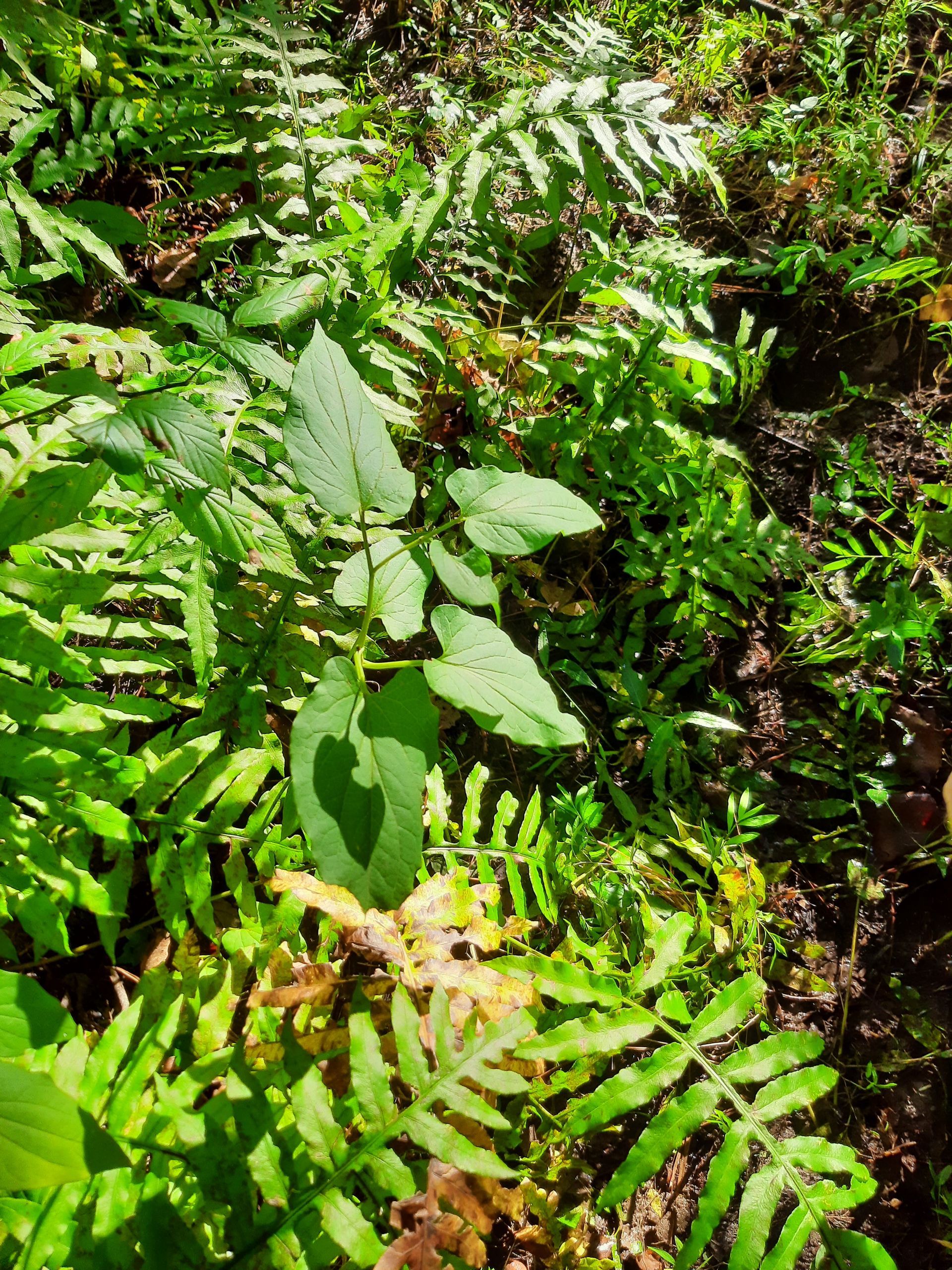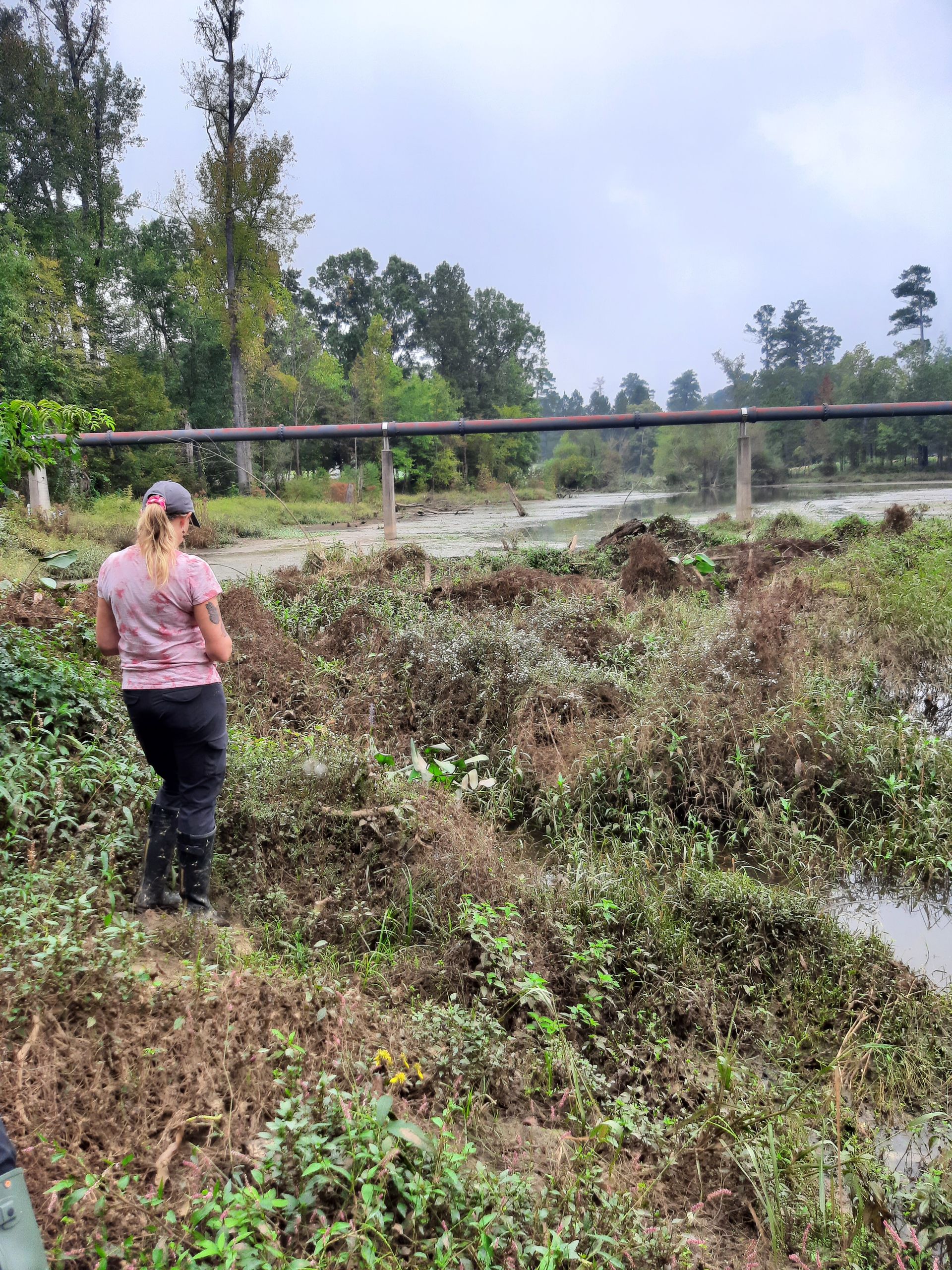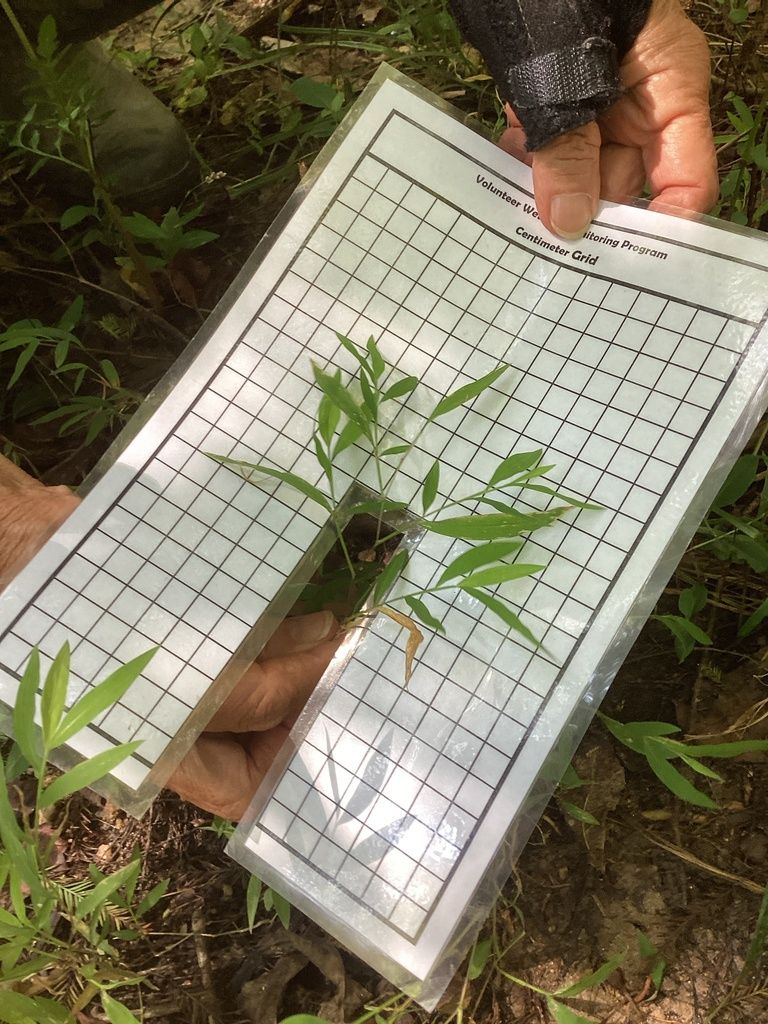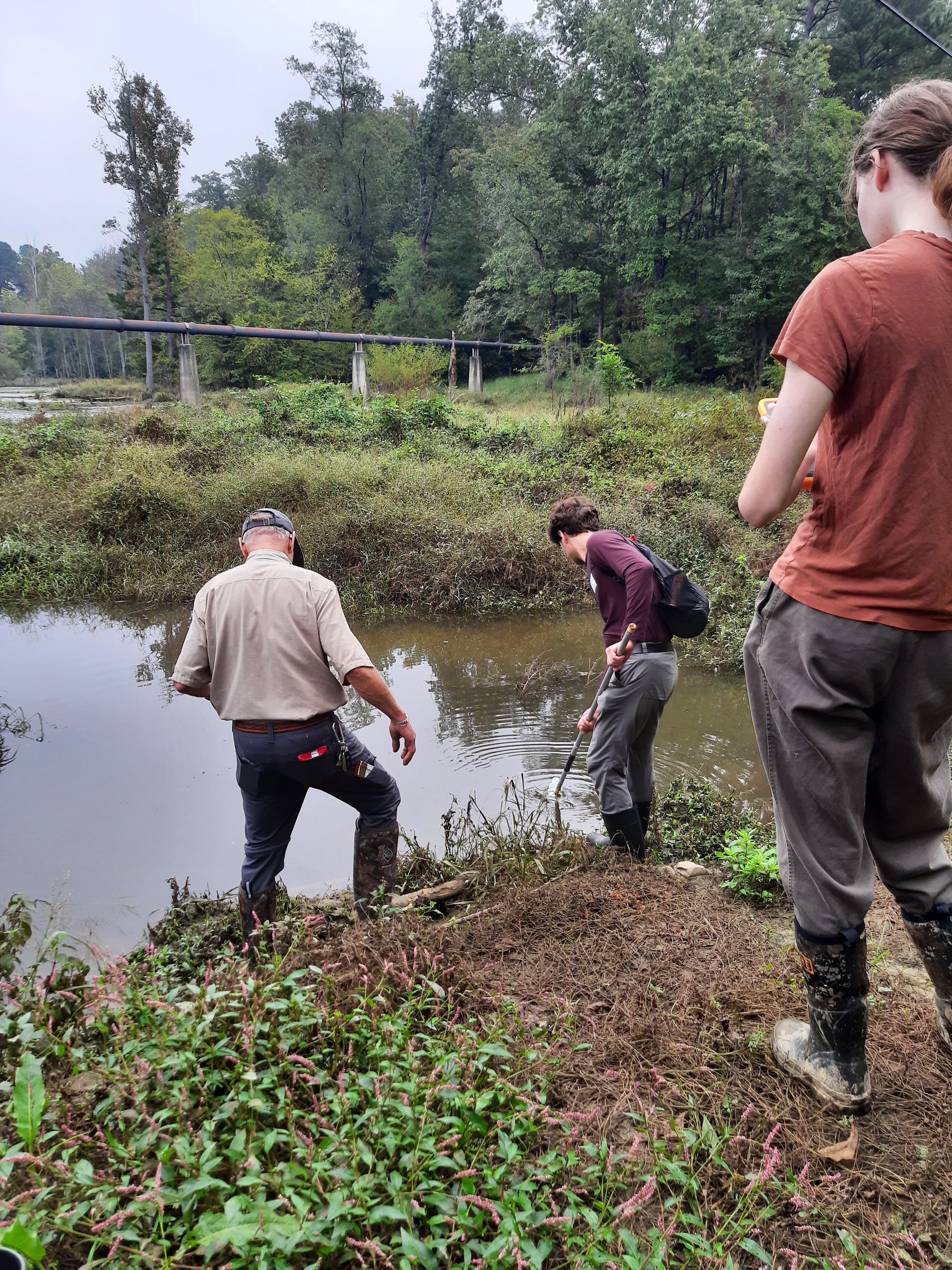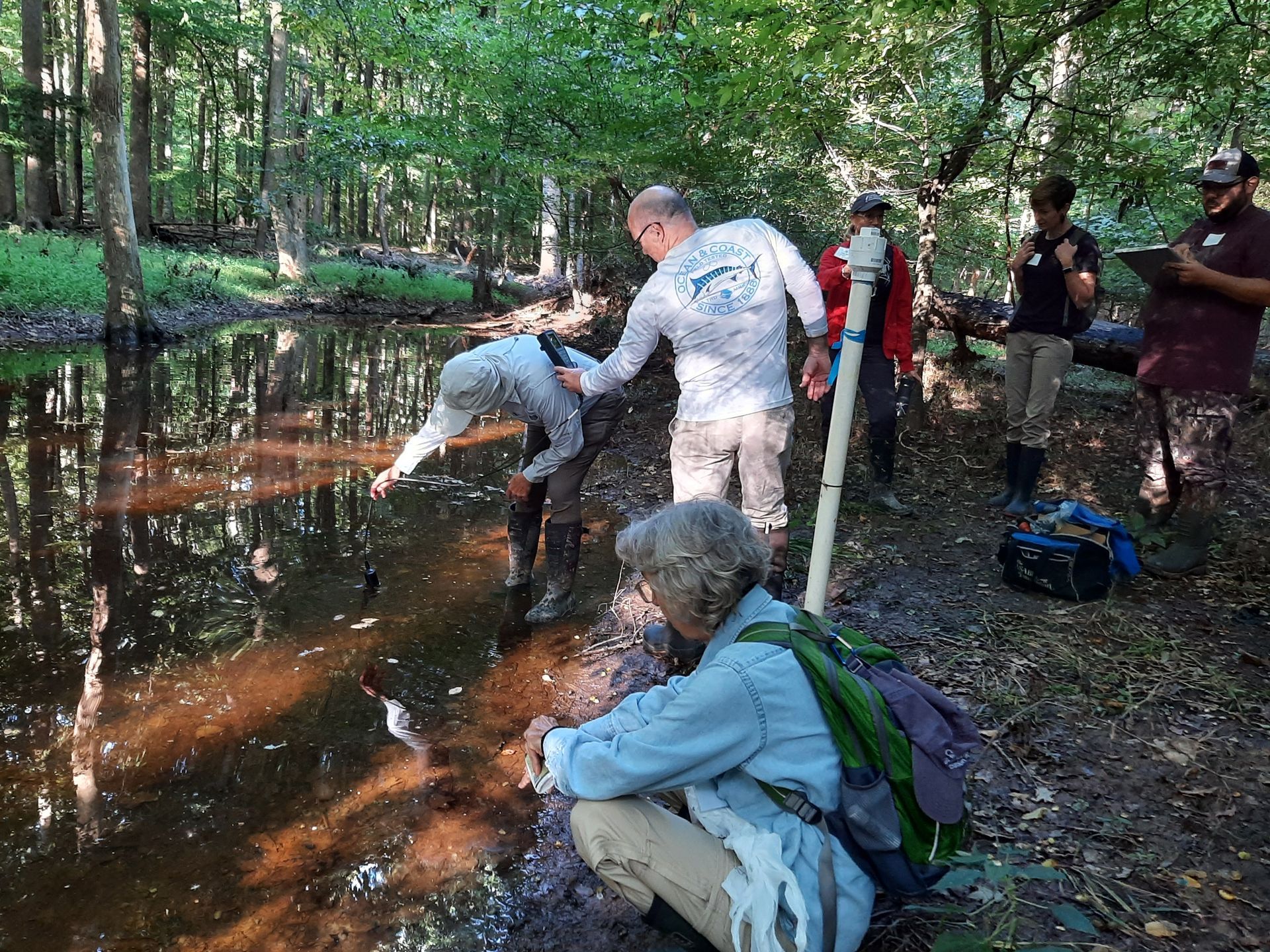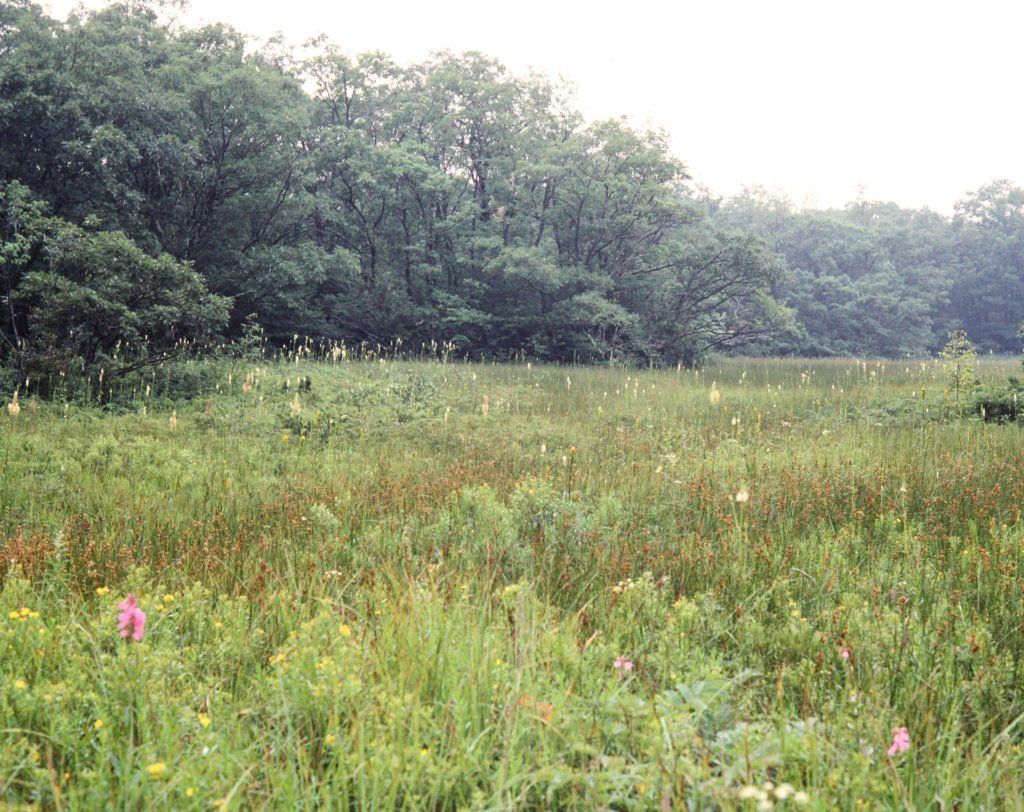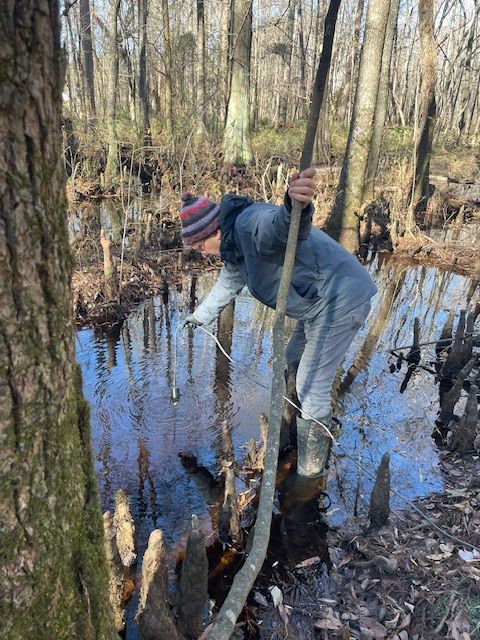Hello and allow me to introduce myself, Aaron Ellis, as your new Volunteer Wetlands Monitoring Program Coordinator! Chase and I will continue to work together for a few more weeks until she goes on maternity leave. We'll miss you Chase!
Fall 2024 Monitoring: Sleuthing Plant IDs and Dodging Hurricanes
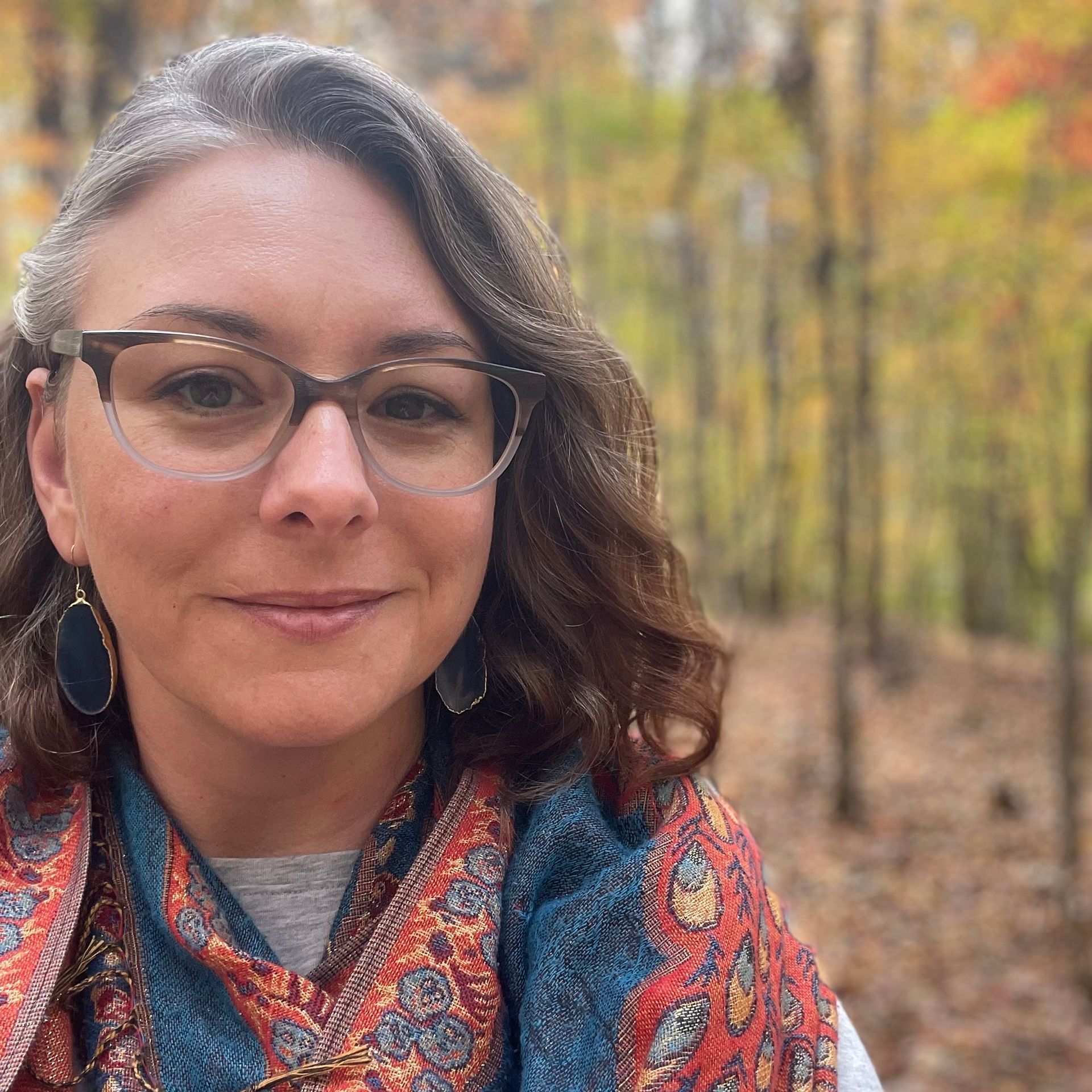

Please also welcome, Seana Finn, a graduate research assistant at NC State University, and is assisting Carolina Wetlands Association (CarWA) with their Volunteer Wetland Monitoring Program. Her research interests focus on using participatory science for water quality and exploring people's perceptions of valuable ecosystems like wetlands. "I’ve had a blast attending the VWMP events so far! I am a Florida native, but I’ve called North Carolina home for the past six years. I’m a proud Shaw University alumna, and before becoming a research assistant, I had the wonderful opportunity to work with the North Carolina Wildlife Federation, which deepened my love for this amazing state and its natural wonders. I’m excited to be working with CarWA and look forward to being involved in such a fun project!" says Seana.
Our fall monitoring went very well at Hemlock Bluffs and Robertson Millpond, with clear weather and many of our seasoned volunteers on site, with a few new faces too. At Mason Farm, we also had a great day, but unfortunately were unable to do our complete monitoring at Study Area 2 due to damage to the road from Hurricane Helene and inundation of our vegetation plots. Some of our lead volunteers still made the mile-long trek back to the site to offload our well data and take a site visit summary. Special thanks to Paul, Andrew, and Daphne! The power of flows from Helene also knocked down many of our boundary poles at Hemlock Bluffs.
At this time of year, we focus on vegetation surveys along with hydrology and water quality. We have several reasons for this- for one, many of the plants we encounter still have mature leaves, are in bloom, or have fruited, which makes them much easier to identify. Our vegetation surveys can be somewhat intensive, depending on how many plants are located within the designated survey area. There’s lots of crawling around with plant books, lists, and photo taking to ensure we are capturing all of the species growing in the plot! We are very grateful for our plant-savvy volunteers who responded to our call for this monitoring season.
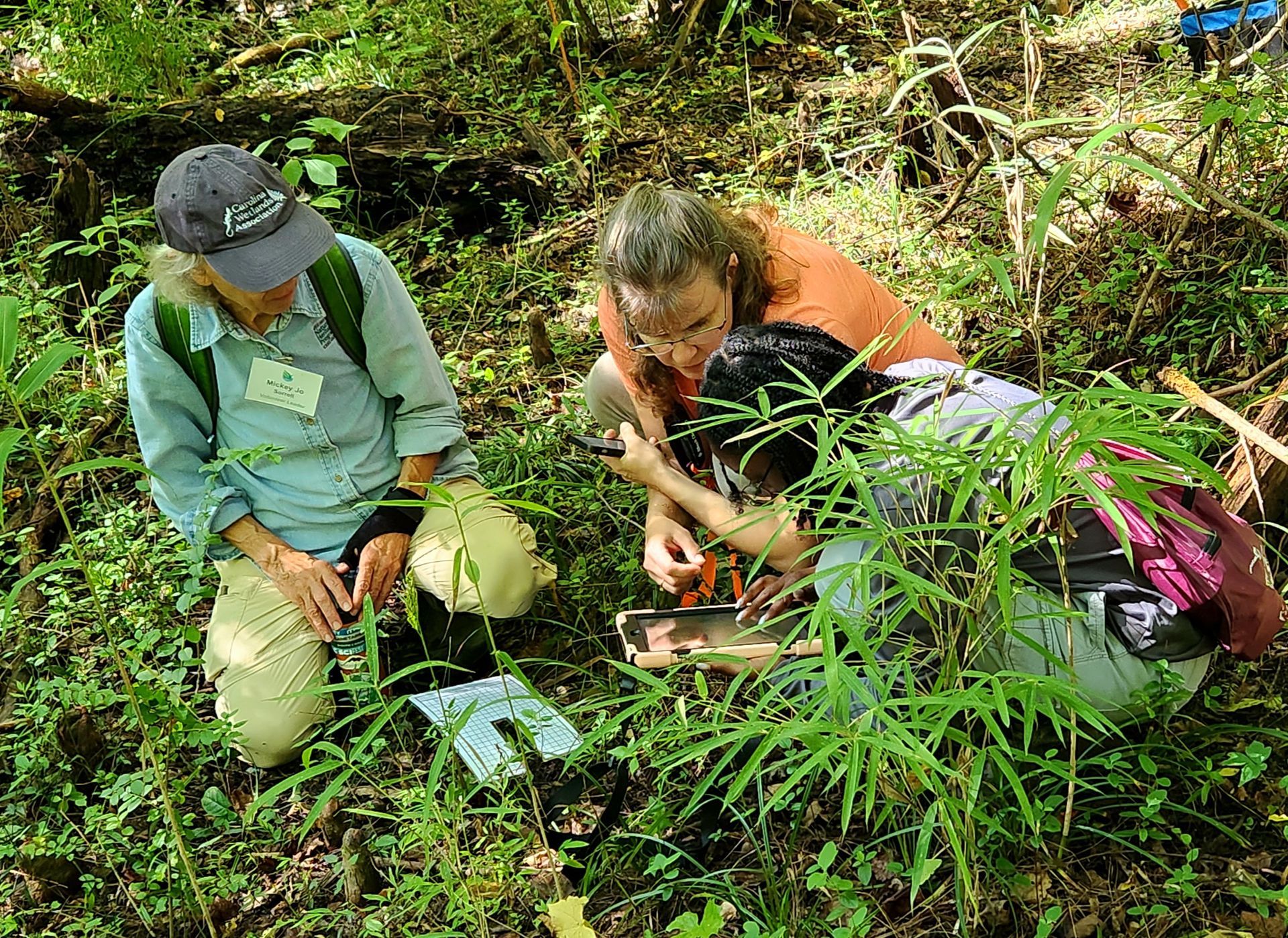
Also we would like to thank NCDEQ employee and our resident wetland plant expert Kristie Gianopulos for attending our monitoring days, and her invaluable help at identifying plants! In fact, it’s her book, Guide to Common Wetland Plants of North Carolina, that we use as a primary reference in much of our work.
We also conducted invasive vegetation species surveys at each of our sites. We saw many of the usual suspects, including Chinese privet, patches of Japanese stiltgrass, a few Callery pear, and also the appearance of a few autumn olive. Overall though it appeared as though there was not a large increase in their documented areas at Robertson. However, we did discover a large patch of a non-native wintercreeper bordering Study Area 1 at Hemlock Bluffs.
We were able to map the percent coverage and location of each invasive in a new test form that Chase built in Kobo Toolbox. We will continue exploring and refining how we document invasive species, so if you are or know of a tech-savvy someone who can help us design a great solution, please let us know! Our volunteer opportunities don’t stop at taking physical measurements in the field- we would love help with our QA/QC of data we collect as well.
If you want to freshen up your plant ID skills, see the resources below.
Our previous plant observations
Previous plant of the month blogs
Common Guide to Wetland Plants
Identification of Common Trees of North Carolina
NC Native Plant Society Non-native Invasive list
NCDOT Invasive Exotic Plant Guide
A field guide for the identification of invasive plants in southern forests
Mistaken Identity? Invasive plants and their native look alikes
Please feel free to save my email,
aaron.ellis@carolinawetlands.org, for any questions, concerns, or other volunteer opportunities! I am looking forward to meeting more of you in our upcoming monitoring sessions.
You might also like
Mailing Address
Carolina Wetlands Association
PO Box 3359
Raleigh, NC 27636
Mailing Address
Carolina Wetlands Association
PO Box 3359
Raleigh, NC 27636
Mailing Address
Carolina Wetlands Association
PO Box 3359
2Raleigh, NC 27636
All Rights Reserved | Carolina Wetlands Association
